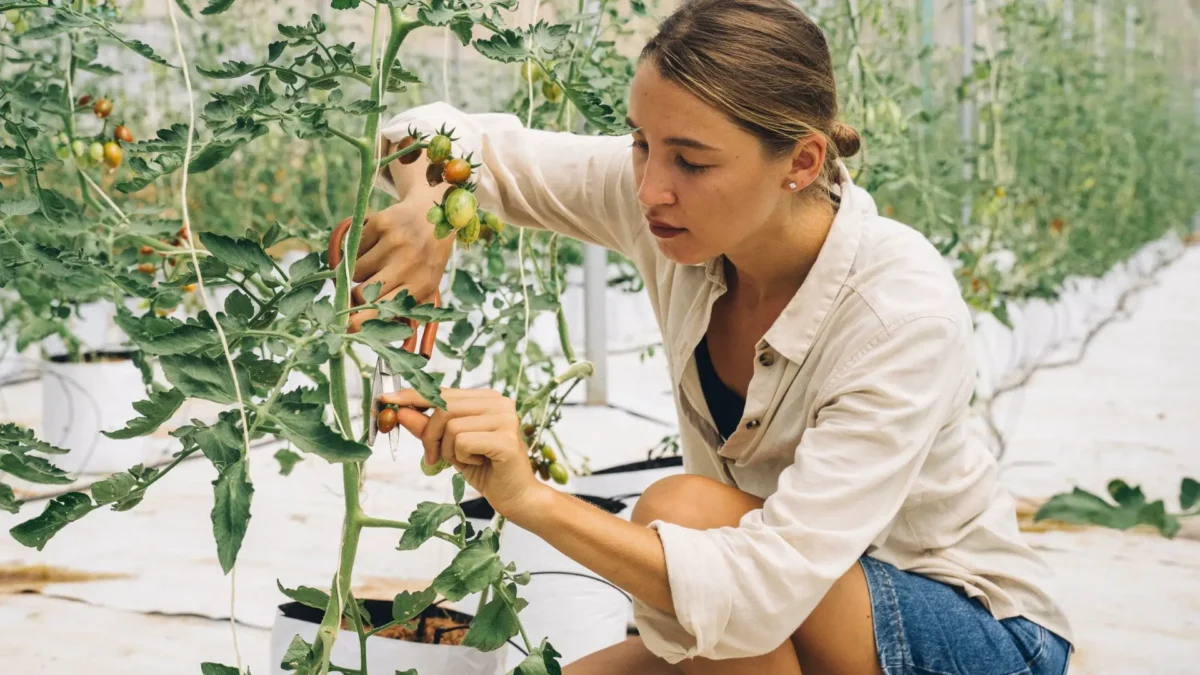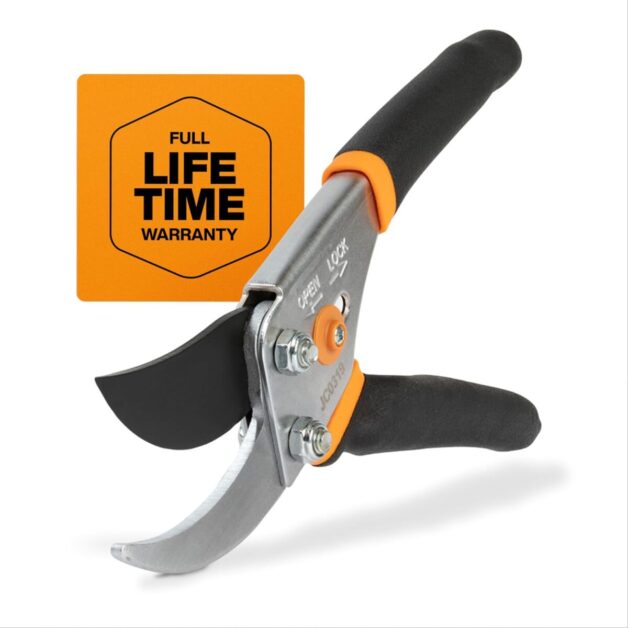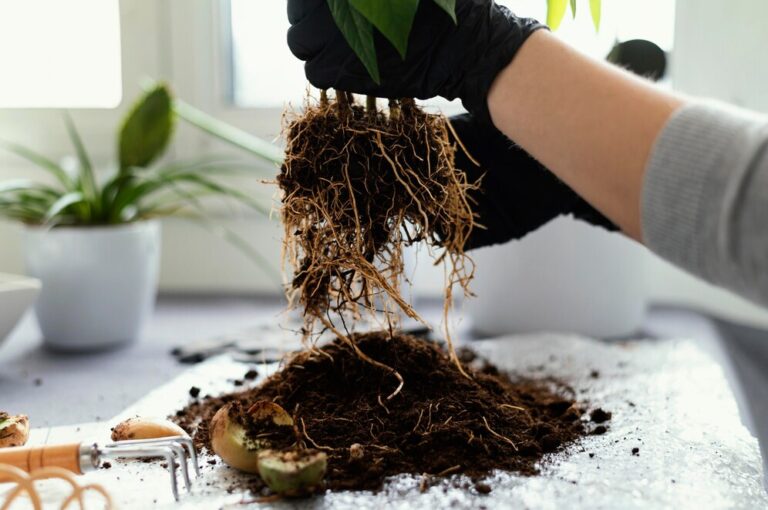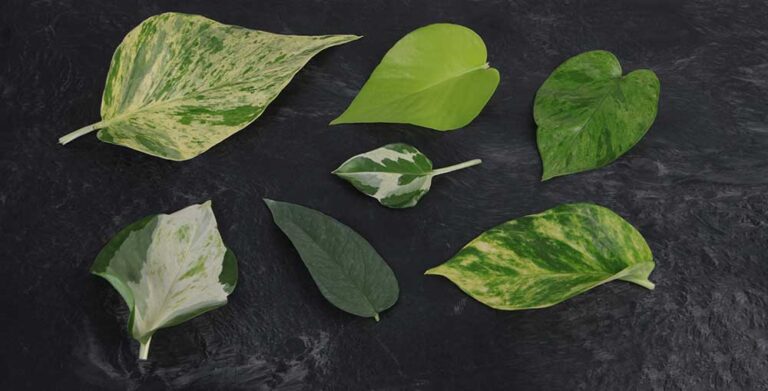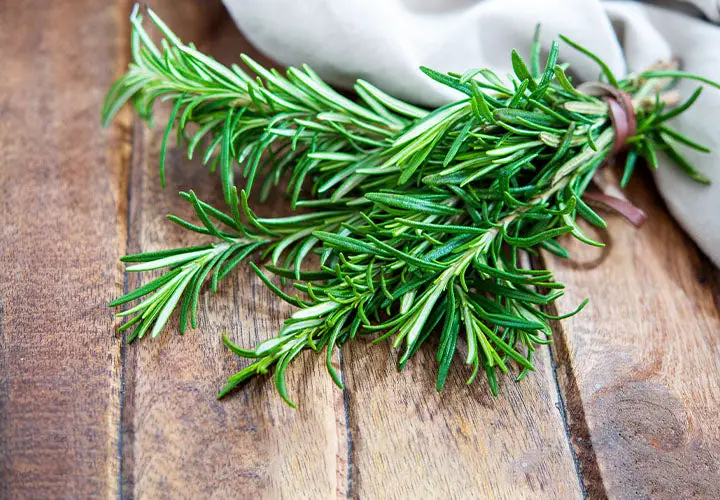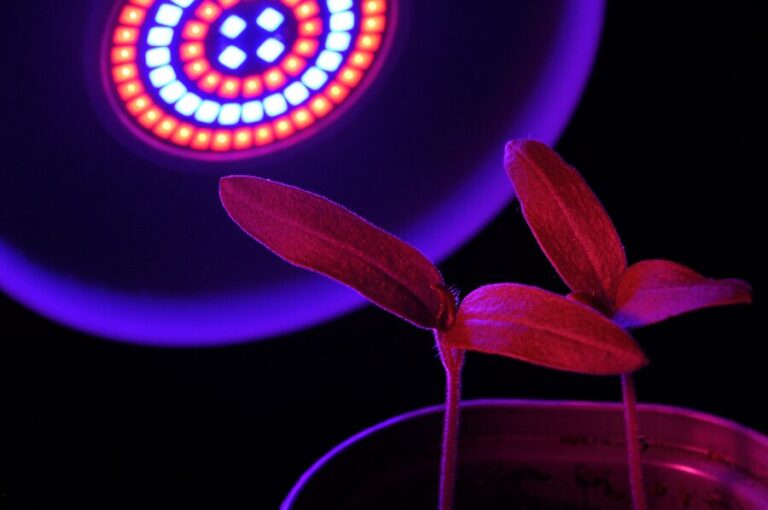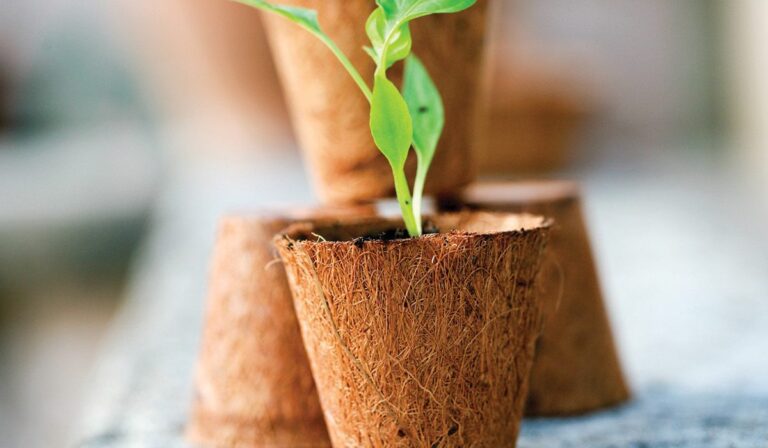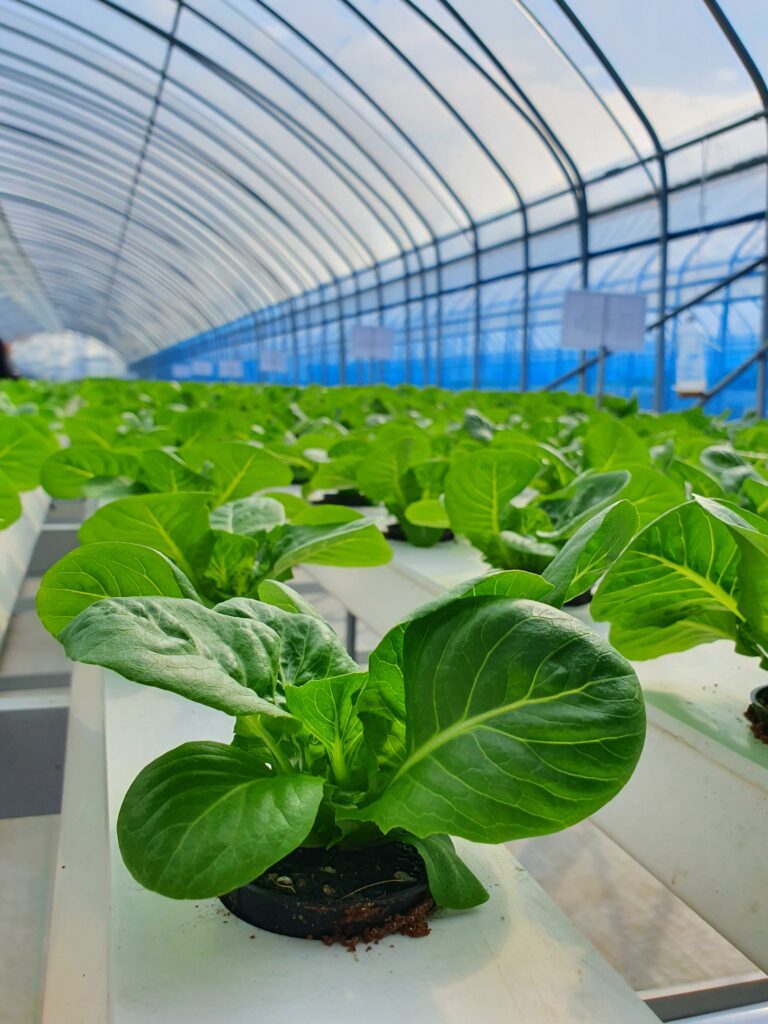How and When to Prune Your Hydroponic Plants for Better Growth and Health
Are you ready to take your hydroponic gardening to the next level? Pruning your plants could be the key to unlocking their full potential. But how and when should you prune for the best results? Whether you’re a seasoned hydroponic enthusiast or just starting out, understanding the art of pruning can make a world of difference in your plant’s growth and health. In this blog, we’ll dive into the ins and outs of pruning, exploring the best techniques and timing to ensure your hydroponic garden thrives. Get ready to witness your plants flourish like never before!
Table of Contents
The Importance of Pruning in Hydroponic Systems
Pruning plays a critical role in the success of hydroponic systems, as it directly impacts the growth and productivity of plants. By selectively removing certain parts of the plant, such as branches, leaves, or buds, gardeners can optimize the plant’s health and overall performance.

Step-by-Step Guide to Pruning Your Hydroponic Plants
- Assess Plant Canopy: Start by evaluating the canopy of your hydroponic plants. Look for overcrowded areas and excessive foliage that may hinder airflow and light penetration.
- Thin Out Overcrowded Areas: Carefully remove excess foliage and overcrowded branches using sharp, clean pruning shears. Create space within the canopy to promote better airflow and light distribution.
- Create Well-Ventilated Environment: Aim to create a well-ventilated environment within your hydroponic system. Adequate airflow helps prevent moisture buildup and reduces the risk of fungal diseases.
- Ensure Proper Light Penetration: Trim back branches and leaves that block light from reaching all parts of the plant. Proper light penetration is essential for photosynthesis and overall plant health.
- Control Plant Height and Shape: Use strategic pruning to control the height and shape of your hydroponic plants. Maintain a compact and balanced structure to ensure equal access to nutrients and resources.
- Promote Flowering and Fruit Production: Remove dead or diseased flowers and non-productive branches to redirect the plant’s resources towards healthy blooms and fruit. This practice leads to more abundant and higher quality yields.
- Enhance Disease Prevention: Regularly inspect your hydroponic plants for signs of disease or pest infestation. Promptly remove any infected or infested plant material to prevent the spread of diseases and pests.
- Proactive Pest Management: Pruning plays a proactive role in pest management. By removing infested plant material, you can reduce the risk of pest outbreaks and maintain a healthy hydroponic system.
Overall, the importance of pruning in hydroponic systems cannot be overstated. By understanding the benefits of regular pruning practices, gardeners can optimize plant growth, ensure proper airflow, control plant height, promote flowering and fruit production, and proactively manage diseases and pests. Moving forward, let us explore the various aspects of pruning in hydroponics and delve into the techniques and tools needed to achieve maximum benefits.
Understanding the Growth Cycle of Hydroponic Plants
Understanding the growth cycle of hydroponic plants is essential for successful gardening in this unique and efficient system. Hydroponics, as a soil-less method of cultivation, allows plants to grow in a controlled environment where their growth and development can be closely monitored and optimized. By understanding the growth cycle, gardeners can provide the necessary care and adjustments to promote healthy plant growth and maximize yields.
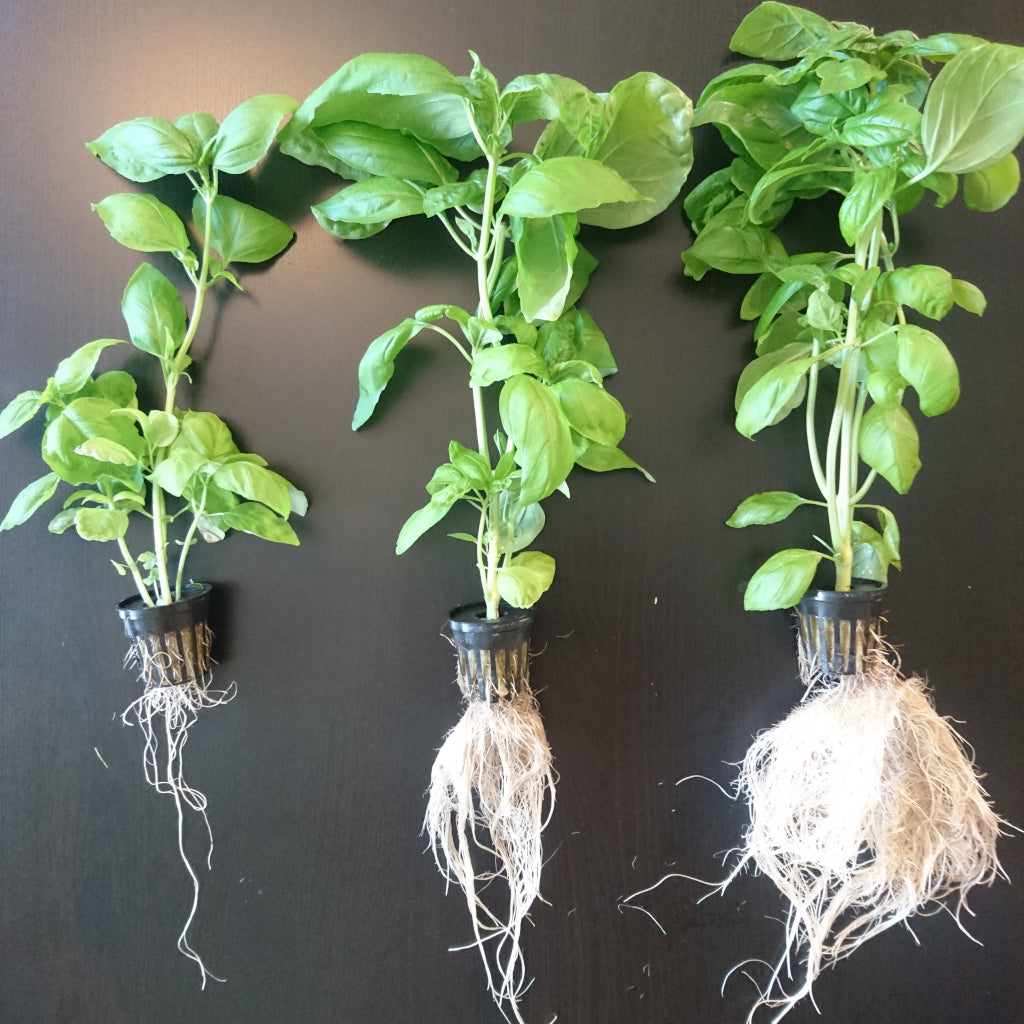
- Germination Phase:
- Objective: Seeds sprout and develop into seedlings.
- Conditions:
- Optimal humidity and temperature levels.
- Moist growing medium (such as rock wool or peat pellets).
- Care:
- Maintain consistent moisture without overwatering.
- Provide gentle light to encourage seedling growth.
- Vegetative Stage:
- Objective: Focus on leaf and stem growth.
- Conditions:
- Adequate lighting (usually 16-18 hours of light per day).
- Nutrient-rich solutions (balanced N-P-K ratios).
- Proper pruning to encourage branching.
- Care:
- Monitor nutrient levels and adjust as needed.
- Ensure sufficient airflow to prevent mold or disease.
- Flowering or Fruiting Phase:
- Objective: Transition to producing blooms or developing fruits.
- Conditions:
- Adjust lighting cycles (usually 12 hours of light per day).
- Modify nutrient ratios (higher phosphorus and potassium).
- Care:
- Pollinate flowers (if applicable).
- Monitor for pests and diseases.
- Support heavy fruiting branches.
- Ripening Stage:
- Objective: Fruits mature and reach peak flavor and quality.
- Conditions:
- Maintain stable environmental conditions.
- Harvest fruits at the right time.
- Care:
- Regularly check for ripeness indicators (color, texture, aroma).
- Harvest gently to avoid damage.
Remember that each plant species may have specific requirements, so it’s essential to research and adapt your care routine accordingly. Stay tuned for the next section, where we will delve into identifying the signs that indicate pruning is needed in your hydroponic plants.
Identifying the Signs that Indicate Pruning is Needed
Pruning is a critical practice in maintaining healthy hydroponic plants. By removing unwanted or unnecessary plant material, pruning helps optimize plant growth, increase yields, and prevent the spread of diseases. But how do you know when it’s time to prune your hydroponic plants?

Look out for yellowing leaves, brown spots, or wilting foliage.
Promptly remove any damaged or unhealthy plant parts.
This prevents the spread of diseases and maintains overall plant health.
Observe your hydroponic garden for excessive foliage or tangled neighboring plants.
Overcrowding restricts airflow and light penetration.
Selectively prune to promote better airflow and ensure adequate sunlight for photosynthesis.
Regularly check your plants for signs of distress.
Be proactive in identifying pruning needs.
Adjust your pruning techniques based on the specific hydroponic plant you’re growing.
Essential Tools for Pruning Hydroponic Plants
To effectively prune hydroponic plants, it is essential to have the right tools at your disposal. The proper tools not only make the pruning process more efficient but also help ensure the health and vitality of your plants. Here are some essential tools that every hydroponic gardener should have:
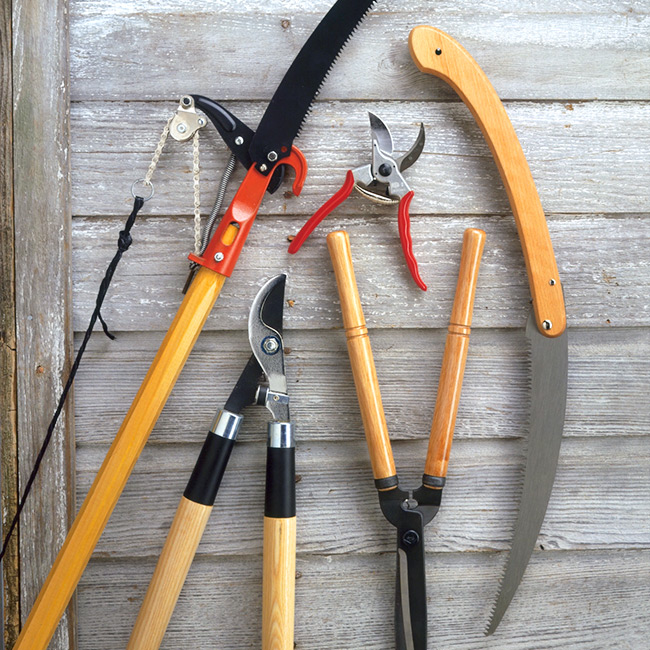
1. Pruning Shears: Also known as trimming scissors or pruning clippers, these handheld tools are designed to make precise cuts on small to medium-sized plant stems. Look for pruning shears with sharp blades and ergonomic handles for comfortable and accurate trimming.
2. Trimming Scissors: These smaller scissors are perfect for delicate pruning tasks, such as removing tiny leaves or shaping newly forming buds. Trimming scissors often have curved blades that allow for closer cuts to the plant, minimizing damage.
3. Pruning Saw: For larger and thicker stems or branches, a pruning saw is necessary. This tool has a serrated blade that enables you to cut through dense plant material with ease. Opt for a foldable saw for convenient storage and transportation.
4. Sterilizing Solution: Proper sterilization of your pruning tools is crucial to prevent the spread of disease or pathogens. A sterilizing solution, such as isopropyl alcohol or bleach diluted in water, should be used to disinfect your tools before and after each pruning session.
5. Protective Gear: To keep yourself safe while pruning, it is advisable to wear gloves to protect your hands from cuts and scratches. Additionally, goggles can shield your eyes from flying debris, and a dust mask may be necessary to prevent inhalation of plant particles.
By investing in these essential tools, you can ensure that your pruning activities are carried out effectively, promoting healthy plant growth and maximizing the benefits of your hydroponic system.
The Corona RazorTOOTH Folding Pruning Saw has been an indispensable tool in my gardening arsenal. Its razor-sharp blade effortlessly cuts through branches of various sizes, while the foldable design makes it easy to store and transport. The ergonomic handle provides a comfortable grip, reducing fatigue during prolonged use. While it may struggle with thicker branches, its overall durability and affordability make it a must-have for any gardener tackling pruning tasks.
- Razor-Sharp Blade: The Corona RazorTOOTH Folding Pruning Saw features a sharp blade that effortlessly cuts through branches and limbs, making pruning tasks quick and efficient.
- Foldable Design: Its folding mechanism allows for safe and compact storage, making it convenient to carry and transport.
- Ergonomic Handle: Designed for comfort and grip, the handle ensures a secure hold during use, reducing fatigue and enhancing control.
- Versatile: Suitable for a variety of pruning tasks, from trimming small branches to cutting thicker limbs, making it a versatile tool for gardeners and landscapers.
- Durability: Constructed with high-quality materials, the pruning saw is durable and built to withstand frequent use in challenging outdoor conditions.
- Affordable: Offers excellent value for money, providing professional-grade performance at an affordable price point.
- Limited Cutting Capacity: While suitable for most pruning tasks, the saw may struggle with very thick branches or hardwoods, requiring additional effort or a different tool for larger cuts.
- Folding Mechanism: Some users may find the folding mechanism stiff or prone to jamming over time, requiring regular maintenance to ensure smooth operation.
- Blade Maintenance: Requires periodic sharpening to maintain optimal cutting performance, which may be challenging for users without the necessary tools or expertise.
- Handle Material: The handle material may not be as durable or comfortable as rubberized or ergonomic alternatives, potentially causing discomfort during prolonged use.
- Safety Concerns: The sharp blade requires careful handling to prevent accidents or injuries, especially when folding and storing the saw.
- Limited Warranty: The product may come with a limited warranty, which may not cover all potential issues or damages, requiring additional investment for repairs or replacements.
Preparing Your Plants for Pruning: Cleaning and Sterilization
Before you proceed with pruning your hydroponic plants, it is essential to prepare them by ensuring cleanliness and sterilization. This step is crucial to prevent the spread of diseases and maintain a healthy environment for your plants.
- Clean the surrounding area by removing debris and dead plant material.
- Wash containers, tools, and equipment with mild detergent or soap.
- Rinse thoroughly with clean water to remove any residue.
- Sterilize tools that will come in contact with plants to eliminate potential pathogens or bacteria.
- Use rubbing alcohol, bleach, or a commercial sterilization solution.
- Follow manufacturer instructions for correct dilution and application method.
By taking these cleaning and sterilization measures, you are creating a sanitized environment that reduces the risk of introducing pests or diseases to your hydroponic system. This proactive approach sets the stage for successful pruning and promotes the overall health and productivity of your plants.
The Best Time to Prune Hydroponic Plants for Maximum Benefit
Pruning plays a crucial role in maintaining the health and productivity of hydroponic plants. However, timing is everything when it comes to this horticultural practice. The best time to prune hydroponic plants for maximum benefit depends on the specific growth stage and the type of plant being cultivated.

- Identify the Vegetative Stage: Begin pruning during the vegetative stage when the plants are actively growing and developing foliage.
- Remove Excess Vegetation: Trim away excess vegetation to direct the plant’s energy towards producing stronger stems and larger leaves. This promotes overall plant health.
- Shape Growth: Use pruning to shape the plant’s growth and maintain a balanced canopy. This allows for better airflow and light penetration, which are essential for healthy plant development.
- Transition to Flowering/Fruiting Stage: As the plants transition into the flowering or fruiting stage, adjust pruning practices accordingly.
- Focus on Flowering/Fruiting: During this stage, the focus shifts towards encouraging flower or fruit production and supporting their growth.
- Prune Strategically: Employ pruning techniques such as removing dead or diseased plant material, trimming overcrowded areas, and promoting branching to optimize flowering and fruiting.
- Exercise Caution: Be precise and cautious during this stage to avoid damaging delicate flower buds or developing fruits.
By understanding the specific needs of each crop and employing appropriate pruning techniques at the right time, gardening enthusiasts can ensure healthier plants, increased yields, and a more efficient use of resources in their hydroponic systems.
Techniques for Pruning Different Types of Hydroponic Plants
Pruning techniques can vary depending on the type of hydroponic plant you are growing. Each plant has different growth habits and requires specific pruning methods to ensure optimal growth and productivity. Here are some techniques for pruning different types of hydroponic plants.

- Leafy Greens (Lettuce and Spinach):
- Goal: Promote leaf development and prevent legginess.
- Method: Regularly remove outer, older leaves to encourage fresh, new growth.
- Benefit: Allows continuous harvesting of tender leaves and maintains plant quality.
- Fruit-Bearing Plants (Tomatoes, Peppers):
- Goal: Proper fruit development and ripening.
- Method: Selectively prune stems and branches.
- Specific Technique: Suckering – Remove lateral shoots emerging from leaf axils between the main stem and leaves.
- Benefit: Prevents overcrowding, directs nutrients and sunlight to fruits.
- Vine-Like Plants (Cucumbers, Beans):
- Goal: Support growth and control plant size.
- Method: Trim excessive lateral branches.
- Training: Attach main vines to trellises or vertical structures.
- Benefits: Promotes upward growth, efficient space utilization, and better air circulation.
Remember that sustainable and natural methods are ideal for plant care. Adjust your pruning techniques based on the specific needs of each plant species! 🌱🌿
The following table explains about the techniques for pruning different types of hydroponic plants:
| Hydroponic Plant Type | Optimal Pruning Frequency | Pruning Severity | Quantitative Impact |
|---|---|---|---|
| 1. Tomatoes (Indeterminate) | – Weekly to bi-weekly. | – Moderate pruning of lateral shoots. | – Increased fruit production by 10-15% annually. |
| – Removal of excess leaves for light penetration. | – Improved nutrient distribution and airflow. | ||
| 2. Lettuce (Leafy Greens) | – Periodic trimming of outer leaves. | – Light pruning to encourage lateral growth. | – Maintains constant leaf production for continuous harvest. |
| – Removal of damaged or yellowing leaves. | – Enhances overall plant health and appearance. | ||
| 3. Cucumbers (Vining) | – Regular pruning of lateral vines. | – Moderate to heavy pruning for air circulation. | – Prevention of overcrowding and disease spread. |
| – Removal of excess foliage for better fruit development. | – Increased cucumber size and quality. | ||
| 4. Basil (Herbs) | – Regular pinching of terminal buds. | – Light pruning to encourage bushier growth. | – Promotes more compact and productive plants. |
| – Removal of flowering tops for prolonged harvest. | – Enhanced flavor and oil content in basil leaves. | ||
| 5. Strawberries (Runners) | – Removal of runners as needed. | – Trimming of older leaves for improved airflow. | – Concentrates energy on fruit production. |
| – Regular thinning of crowded plants. | – Increased berry size and yield. |
Keep in mind that while pruning is beneficial for most hydroponic plants, it is essential to approach each type with care and caution. Always research the specific pruning requirements of the plants you are growing and adapt your techniques accordingly. By employing the right pruning methods for different hydroponic plants, you can enhance their overall health, productivity, and aesthetic appeal in your hydroponic system.
Removing Dead or Diseased Plant Material
Dead or diseased plant material can have a significant impact on the overall health and productivity of hydroponic plants. As a gardening enthusiast, it is important to regularly remove any plant material that shows signs of decay or disease. By doing so, you can prevent the spread of harmful pathogens and bacteria that can compromise the entire system.
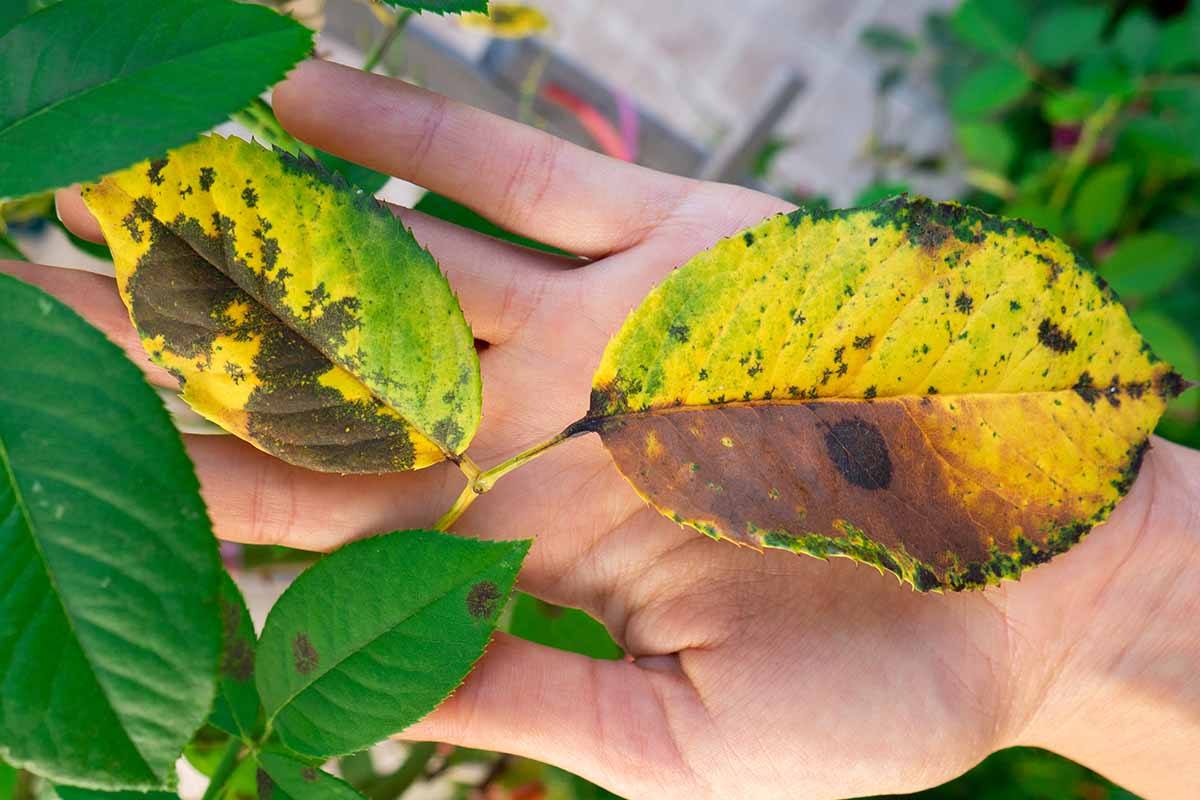
- Sterilize Tools:
- Importance: To minimize contamination risk.
- Method: Before each use, sterilize pruning shears or scissors with a 1:10 bleach solution.
- Benefit: Ensures tools are pathogen-free.
- Proper Disposal:
- Importance: Prevent reintroducing harmful elements.
- Method: Seal pruned material in a plastic bag.
- Disposal: Dispose of it in the appropriate waste collection system.
- Regular Inspection:
- Importance: Maintain a healthy growing environment.
- Action: Promptly remove dead or diseased material.
- Result: Prevents disease spread and directs resources to healthy growth.
Stay vigilant and keep a close eye on your hydroponic plants to ensure the removal of any dead or diseased components, creating optimal conditions for their thriving.
Trimming Overcrowded Areas to Promote Airflow and Light Penetration
• Trimming overcrowded areas in hydroponic systems promotes optimal airflow and light penetration.
• Overcrowding can lead to poor air circulation and limited light exposure, hindering plant growth.
• Pruning is essential for maintaining a balanced and thriving hydroponic garden.
• Trimming allows for better air movement between plants, reducing the risk of fungal diseases and pests.
• Adequate airflow improves nutrient uptake and photosynthesis, leading to robust plant growth and increased yields.
• Trimming also facilitates better light penetration, ensuring each plant receives an equal share of available light.
• Proper pruning techniques help manage overcrowded areas and promote healthy crop growth in hydroponic systems.
Maintaining a Balanced Canopy: Removing Excessive Foliage
A well-structured canopy is essential for plant health and productivity.
Excessive foliage can hinder airflow and light penetration, making plants more susceptible to diseases and pests.
Improved Air Circulation: Pruning allows better airflow within the canopy.
Enhanced Light Distribution: Proper pruning ensures all parts of the plant receive adequate light for photosynthesis.
Reduced Disease Risk: Good air circulation minimizes the risk of fungal diseases.
Overall Plant Health: Removing excess foliage improves the plant’s overall health.
Energy Redistribution: By pruning redundant leaves, the plant’s energy is redirected towards flower and fruit development.
Optimal Flowering and Fruiting: Proper pruning enhances flowering and fruiting production.
Promoting Branching and Encouraging New Growth through Pruning
Promoting branching and encouraging new growth through pruning is a crucial aspect of maintaining healthy and productive hydroponic plants. By employing proper pruning techniques, gardeners can stimulate the development of lateral branches, leading to fuller and bushier plants that are better equipped to absorb nutrients and produce abundant yields.

- Understand the Method: Familiarize yourself with the concept of promoting branching through techniques such as topping and pinching.
- Recognize the Need: Identify plants that could benefit from promoting branching, especially those that tend to grow tall and leggy.
- Prepare for Topping: Gather the necessary tools such as scissors or pruning shears for the topping process.
- Locate the Main Stem: Identify the main stem of the plant from which you will be removing the top portion.
- Choose the Cutting Point: Select a point just above a set of healthy leaves or nodes on the main stem for the topping cut.
- Execute the Cut: Carefully cut the main stem just above the chosen point, ensuring a clean and precise cut.
- Redirect Auxin: By removing the top portion of the main stem, redirect the plant’s growth hormone, auxin, to the lateral buds, stimulating their growth and development into new branches.
- Encourage Compact Growth: Topping encourages a more compact and bushy growth habit, enhancing the overall appearance of the plant.
- Understand Pinching: Learn about the pinching technique, which involves manually removing the tips of young, developing shoots or stems.
- Apply Pinching: Pinch the tips of selected shoots or stems to signal the plant to focus its energy on lateral growth rather than vertical elongation.
- Maintain Balance: Pinching helps maintain a balanced and proportionate canopy by preventing certain areas from becoming overly dominant.
- Enhance Air Circulation and Light Penetration: Through topping and pinching, improve air circulation and light penetration throughout the plant, minimizing the risk of disease and maximizing photosynthetic efficiency.
By following these steps, you can effectively employ topping and pinching techniques to promote branching and enhance the overall growth and health of your plants.
The Fiskars Bypass Pruning Shears have revolutionized my gardening experience. With their sharp blades and precise cutting action, they make quick work of trimming branches and shaping plants. The ergonomic design ensures a comfortable grip, allowing me to prune for extended periods without experiencing hand fatigue. While they excel at cutting smaller branches and foliage, they may encounter difficulty with thicker branches. However, their durability and affordable price point make them a valuable addition to any gardener’s toolkit.
Additionally, I appreciate the safety features incorporated into these shears, such as the convenient locking mechanism that prevents accidents when not in use. Despite their limitations with thicker branches, their versatility and ease of use make them a go-to tool for various pruning tasks in my garden. Overall, the Fiskars Bypass Pruning Shears offer professional-grade performance at a reasonable price, making them a must-have for both novice and experienced gardeners alike.
✅ Ergonomic Design: Designed for comfort and ease of use, the shears feature a comfortable grip handle that reduces hand fatigue during extended pruning sessions.
✅ Durable Construction: Made with high-quality materials, these shears are durable and built to withstand frequent use in the garden.
✅ Versatility: Suitable for a variety of pruning tasks, from cutting small branches to trimming flowers and foliage, making them a versatile tool for gardeners.
✅ Locking Mechanism: Equipped with a convenient locking mechanism, the shears can be safely stored when not in use, preventing accidental injury.
✅ Affordable: Offers excellent value for money, providing professional-grade performance at an affordable price point.
❌ Blade Maintenance: Requires periodic sharpening to maintain optimal cutting performance, which may be challenging for users without the necessary tools or expertise.
❌ Handle Material: Some users may find the handle material less durable or comfortable compared to rubberized or ergonomic alternatives, potentially causing discomfort during prolonged use.
❌ Safety Concerns: While the locking mechanism helps prevent accidents, users should still exercise caution when handling sharp blades to avoid injuries.
❌ Limited Warranty: The product may come with a limited warranty, which may not cover all potential issues or damages, requiring additional investment for repairs or replacements.
❌ Not Suitable for Left-Handed Users: The shears are designed for right-handed users, which may be inconvenient for left-handed individuals.
Understanding the Role of Pruning in Controlling Plant Height
Pruning plays a crucial role in controlling the height of hydroponic plants. By selectively removing certain parts of the plant, such as branches or shoots, gardeners can effectively manage how tall the plant grows. This is particularly important in hydroponic systems where space is often limited, and controlling plant height is essential for maximizing yield and optimizing overall growth conditions.

- Recognize the Need for Height Control: Understand the importance of pruning in preventing plants from becoming too tall and top-heavy in hydroponic systems.
- Prepare for Pruning: Gather the necessary tools such as scissors or pruning shears for the pruning process.
- Assess Plant Growth: Evaluate the growth of the plants to determine which areas need pruning to control height.
- Identify Excessive Growth: Locate areas of excessive growth that contribute to the plant’s height and potential stability issues.
- Understand Energy Redistribution: Recognize that by removing excessive growth, the plant’s energy can be redirected towards other essential areas such as root development, flower and fruit production, and overall plant health.
- Select Pruning Targets: Choose which parts of the plant need pruning to control height, focusing on removing excessive vertical growth.
- Execute Pruning Cuts: Carefully make pruning cuts to remove the identified excessive growth, ensuring clean and precise cuts to minimize stress on the plant.
- Promote Compact Growth: By reducing the height of the plant through pruning, promote a more compact and bushy growth habit, strengthening the overall structure of the plant.
- Facilitate Better Canopy: A more compact and bushy growth habit facilitates better light penetration and airflow within the plant canopy, preventing the plant from becoming overly dense and susceptible to pests and diseases.
- Optimize Plant Health and Productivity: Understand that pruning plays a crucial role in optimizing plant health and productivity in hydroponic systems by controlling height and promoting a well-balanced growth structure.
- Appreciate Visual and Functional Benefits: Recognize that a well-pruned plant is not only visually appealing but also more resilient and productive, making pruning an essential practice for hydroponic gardeners seeking to achieve the best possible results from their plants.
By following these steps, hydroponic gardeners can effectively utilize pruning to control plant height, promote optimal growth, and maximize the health and productivity of their plants.
Pruning Techniques for Vine-Like Hydroponic Plants
Pruning vine-like hydroponic plants is crucial for maintaining their health and optimizing their growth. With the right techniques, you can ensure that your plants remain vigorous and productive throughout their growth cycle.
thinning

One important technique for pruning vine-like hydroponic plants is thinning. As these plants grow, they tend to produce an excessive amount of lateral shoots and branches. By thinning out these excess shoots, you can promote better airflow and light penetration throughout the plant, reducing the risk of disease and fostering optimal growth conditions. Additionally, thinning helps to maintain a balanced canopy, preventing overcrowding that can lead to competition for resources among the plants.
Suckers
Another essential pruning technique is the removal of suckers. Suckers are non-fruiting side shoots that emerge from the base of the plant or the leaf axils. By removing these suckers, you redirect the plant’s energy towards fruiting and improved overall growth. Regularly inspect your vine-like hydroponic plants for the presence of suckers, and carefully remove them by cutting them close to the main stem. This will ensure that the plant’s resources are focused on producing quality fruit or flowers.
Remember, proper pruning techniques for vine-like hydroponic plants will vary depending on the specific species and its growth habits. It is essential to research and understand the specific needs of your plants to ensure successful pruning.
Pruning for Improved Flowering and Fruit Production
Proper pruning techniques can greatly enhance flowering and fruit production in hydroponic plants. By strategically removing certain branches or parts of the plant, gardeners can encourage the growth of new shoots and redirect nutrients towards the development of flowers and fruits.
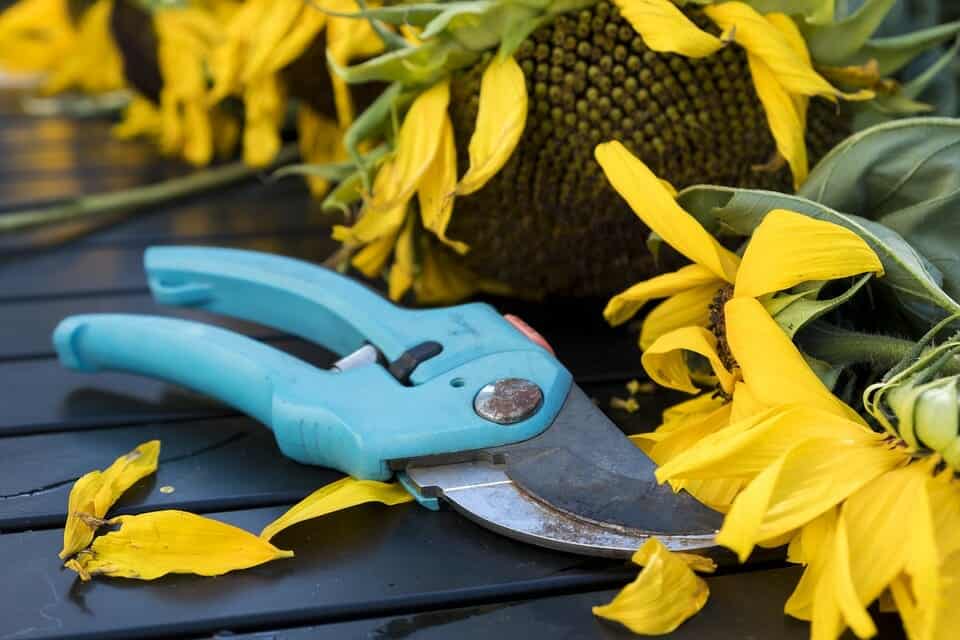
- Timing of Pruning:
- Flowering Plants: Prune during the dormant period or immediately after blooming.
- Allows time for recovery and preparation for the next growth season.
- Fruiting Plants: Prune during early fruit development.
- Nutrient redistribution towards growing fruits.
- Results in larger and healthier yields.
- Flowering Plants: Prune during the dormant period or immediately after blooming.
- Method of Pruning:
- Branch/Shoot Selection: Identify which parts to remove.
- Excessive Foliage: Promotes better airflow and light penetration.
- Overcrowded Areas: Essential for optimal flowering and fruit set.
- Height Control: Pruning helps manage plant height within limited hydroponic space.
- Branch/Shoot Selection: Identify which parts to remove.
By understanding and implementing proper pruning techniques, gardeners can maximize the potential of their hydroponic plants, encouraging prolific flowering and abundant fruit production. However, it is important to note that each plant species may have specific requirements, so it is advisable to consult specific guidelines for the particular plants being grown.
With careful attention to timing and method, gardeners can enjoy the rewards of their efforts through bountiful harvests of beautiful flowers and delicious fruits.
The Role of Pruning in Disease Prevention and Pest Management
Pruning plays a crucial role in disease prevention and pest management in hydroponic systems. By regularly removing dead or diseased plant material, gardeners can reduce the risk of pathogens spreading throughout the growing area. Pruned materials should be promptly and properly disposed of to prevent any potential disease transmission. Additionally, pruning helps improve airflow and light penetration, creating an environment that is less favorable for pests and diseases to thrive.

- Regularly removing dead or diseased plant material reduces the risk of pathogen spread
- Prompt and proper disposal of pruned materials prevents disease transmission
- Improved airflow and light penetration create an environment less favorable for pests and diseases
- Pruning decreases incidence and severity of plant diseases in hydroponic systems
- Study by Jones and Ristaino (2005) showed significant reduction in foliar diseases with regular pruning of tomato plants
- Removal of infected leaves disrupts disease cycle, minimizing chances of infection spreading to healthy parts
- Proactive approach to disease prevention contributes to higher crop yields and overall plant health
- Pruning aids in pest management by reducing hiding places and breeding grounds for insects
- Opening up canopy creates less favorable environment for pests to infest
- Study by Odeyemi et al. (2019) observed reduced populations of aphids and whiteflies with pruning cucumber plants
- Removal of excessive foliage limits spread and impact of pest infestations
- Incorporating regular pruning practices into hydroponic systems effectively prevents diseases and manages pest populations
- Plant-specific resources should be consulted for proper pruning techniques
By incorporating regular pruning practices into hydroponic systems, gardening enthusiasts can effectively prevent diseases and manage pest populations. However, it is important to note that each plant species may have specific pruning requirements and techniques. It is crucial to consult plant-specific resources, such as reputable gardening guides or expert advice, to ensure proper pruning practices are followed for optimal disease prevention and pest management in hydroponic systems.
Post-Pruning Care: Proper Disposal of Pruned Materials
Proper disposal of pruned materials is an essential step in post-pruning care for hydroponic plants. When it comes to effectively managing the waste generated from pruning, gardeners must prioritize cleanliness and hygiene to prevent the spread of diseases and pests.
- One important aspect of proper disposal is to remove the pruned materials from the growing area as soon as possible.
- Leaving them in proximity to the plants can create a breeding ground for fungal and bacterial infections, which can quickly impact the overall health of the entire crop.
- Therefore, it is advisable to have a designated disposal area or bag where you can collect and safely dispose of the pruned material.
- This helps to minimize the risks associated with contamination and ensures a healthier growing environment for your hydroponic plants.
Monitoring and evaluating the effects of pruning in hydroponic systems
Monitoring and evaluating the effects of pruning in hydroponic systems is crucial to ensure the success of your plants. Regular monitoring allows you to track the growth and health of your plants, identify any issues or anomalies, and make necessary adjustments.
• Regular monitoring allows you to track the growth and health of your plants
• Helps identify any issues or anomalies
• Allows for necessary adjustments to be made
• Keep a record of growth rates, overall appearance, and changes observed after pruning
• Use a growth chart or journal to note down relevant information such as date of pruning and specific techniques used
Quantitative analysis is important for evaluating the impact of pruning:
• Measure key parameters such as plant height, leaf area, and stem diameter before and after pruning
• Collect data over time to assess effectiveness of pruning practices
– Determine if adjustments need to be made
Monitoring and evaluating effects of pruning can help in identifying pest or disease infestations:
– Prompt intervention can be taken
– Helps maintain overall health and productivity
Watch video for more information:
FAQ
What is the purpose of pruning hydroponic plants?
Pruning hydroponic plants helps to promote airflow and light penetration, maintain a balanced canopy, control plant height, encourage branching and new growth, and improve flowering and fruit production.
When should hydroponic plants be pruned for maximum benefit?
The best time to prune hydroponic plants is during their vegetative stage when they are actively growing. Pruning should be avoided during the flowering or fruiting stage.
What tools are essential for pruning hydroponic plants?
Essential tools for pruning hydroponic plants include sterilized pruning shears, clean scissors, sharp knives, and rubbing alcohol for sterilization purposes.
How can I identify the signs that indicate pruning is needed for hydroponic plants?
Essential tools for pruning hydroponic plants include sterilized pruning shears, clean scissors, sharp knives, and rubbing alcohol for sterilization purposes.
Can pruning help prevent diseases and manage pests in hydroponic systems?
Yes, pruning plays a role in disease prevention and pest management in hydroponic systems. Removing dead or diseased plant material can prevent the spread of diseases, and pruning can create a more open and accessible environment for pest control measures.
What should I do with the pruned materials after pruning hydroponic plants?
After pruning hydroponic plants, it is important to properly dispose of the pruned materials. These materials can be composted, discarded in a designated green waste bin, or burned according to local regulations.
How does pruning contribute to controlling the height of hydroponic plants?
Pruning helps control the height of hydroponic plants by removing excessive growth and encouraging branching. This can result in shorter, bushier plants that are easier to manage within the limited space of a hydroponic system.
Are there specific pruning techniques for vine-like hydroponic plants?
Yes, vine-like hydroponic plants may require specific pruning techniques. These can include removing suckers, training the vines along a trellis, and selectively pruning to shape the plant and promote better airflow and light distribution.
Does pruning hydroponic plants have any impact on their growth cycle?
Yes, pruning hydroponic plants can impact their growth cycle. Proper pruning techniques can stimulate new growth, encourage flowering and fruit production, and optimize the overall growth and development of the plants.
How should I clean and sterilize my pruning tools before and after pruning hydroponic plants?
Before pruning hydroponic plants, it is important to clean and sterilize pruning tools. This can be done by wiping the tools with rubbing alcohol or a sterilizing solution. After pruning, tools should be thoroughly cleaned and sterilized again to prevent the spread of diseases or pests.

Studied Agricultural Engineering-Plant Protection at University of California, Davis.
Head of Content writing team at Southelmontehydroponics.com

